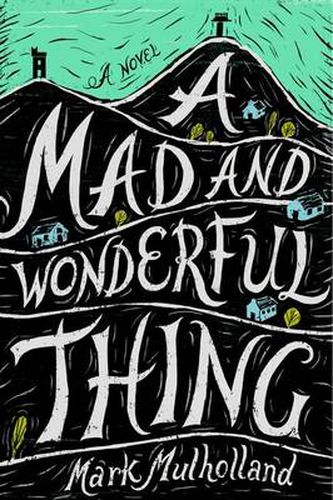Q&A with Mark Mulholland
Our Readings Monthly editor Belle Place interviews Irish writer Mark Mulholland about his debut novel, A Mad and Wonderful Thing, the story of an IRA sniper in the 1990s .
Your novel takes place in Dundalk, Ireland, in the 1990s. You’re from Dundalk, which explains your rich portrayal of the setting, but what drew you to explore this particular historical territory in a novel, and how much personal experience of The Troubles did you have to draw on?
I was born in 1966 and grew up in a town on the Irish border, the base for much IRA activity during the 1970s, 80s and 90s. For all of my early life, a battle surrounded me. It was an odd kind of battle, too, as much of it was hidden; most had no idea what was going on.
Fiction is a slippery thing when aligned so closely to actual history, but I wanted to write of those who got involved in what the Irish call the ‘Troubles’ and what activists call the ‘Struggle’, and others call ‘Terrorism’. It’s an odd thing, and many were not who one would imagine an IRA gunman or bomber to be. Some were hoodlums and some were gentle people with otherwise normal, quiet lives. There was no ‘type’. For some it was about sides, a calling from a very basic us and them. Others would have been involved in a sort of criminality anyway, as that was their want. Others were damaged or carried some grievance or wound. Others went along for the adventure. But the remainder were the committed and the true, and they were deadly. They did it for Ireland. Along with the excitable or vulnerable who will march under a flag and fight, history has gathered a long series of calm and quiet people, intelligent thinkers, intellectuals, poets, etc. who have.
Johnny Donnelly, your protagonist in A Mad and Wonderful Thing, lives a double life: he is both a dreamer and a sharply trained IRA sniper. In your novel, Irish myths and legends allow these two worlds to intersect, and indeed, provide context for Johnny to make sense of his belief systems – why were these ancient stories so important to the characters in your novel?
For Johnny, the old tales romanticise the defence of Ulster [a province in the north of Ireland] against invaders, and they give credence to the joining of an old and noble cause. They lend a sense of magic and adventure to the whole thing. And they help to justify the killing. For me, introducing the old myths and tying them to the story and characters – the story of Johnny mirrors the ancient tale of Cúchulainn, another boy from Dundalk – allows me to show that the human fundamentals dramatised in legends haven’t changed. We still kill and die for the same reasons.
Johnny is described as a good person who does bad things, and Johnny himself says that it is the Irish way to be ‘cursed to have two views on everything’. Is it important to you that readers reach their own conclusions of right and wrong? And establish where the line exists?
Absolutely. It is not for me to judge, to preach, or even to lead or explain. My role as a fiction writer is to present a conflict through story, to detail the choices taken, and to write of the consequences. It is for the reader to analyse events and choices, and to make judgements. Although A Mad and Wonderful Thing is a peculiar tale, the theme is a common and universal call. And Johnny represents the choice to fight, to go to war, and to kill. Cause is a complex motivation and within it are many conflicts and contradictions. Right and wrong are different things, at different times, to different people.
You’ve carefully included real historical events, the timing and location of particular sniper attacks, for one example, with fiction. Conversely, I’ve read that you renamed particular Dundalk streets, such as the one where Cora lived, as you were uncomfortable using a real person’s home in your narrative – how did you allow for these sources to intersect, and decide on the parameters of each?
To ground the novel as close as possible – in a work of fiction – to reality, I am loyal to real events as they historically happened. The sniper killings are all real events; those men did die. Killing by a high velocity .5 calibre round is a brutal event and can only be done by someone of extreme conviction and violence. And yet, despite his complications and brutality, Johnny is an endearing boy. The street name change isn’t a big thing and there is only one. And that is only for a simple, and perhaps personal reason. The settings and locations in the novel are all real, but Cora’s home in River Níth Terrace is an invention. This terrace is modelled on a real street, in that location. Mad as it is, I was uncomfortable locating a dramatic event, albeit a fictional event, by somebody’s actual, real house. That may be silly; but, well, there you go.
Finally, Johnny is a voracious reader and I’ve read that you’re the same – what’s on your reading list at the moment?
I live in France and so make trips home to ravage bookstores and fill the car. Bundles of books can be found around our old house as I plan bursts of reading. Of course, the next trip always beats the finishing and the bundles multiply. My reading, therefore, is seldom current. My immediate stack includes: Iain McGilchrist’s The Master and his Emissary, Colm Tóibín’s The Testament of Mary, George Johnson’s Fire in the Mind, Matt Ridley’s The Origins of Virtue, John Moriarty’s Invoking Ireland and Eowyn Ivey‘s The Snow Child.



